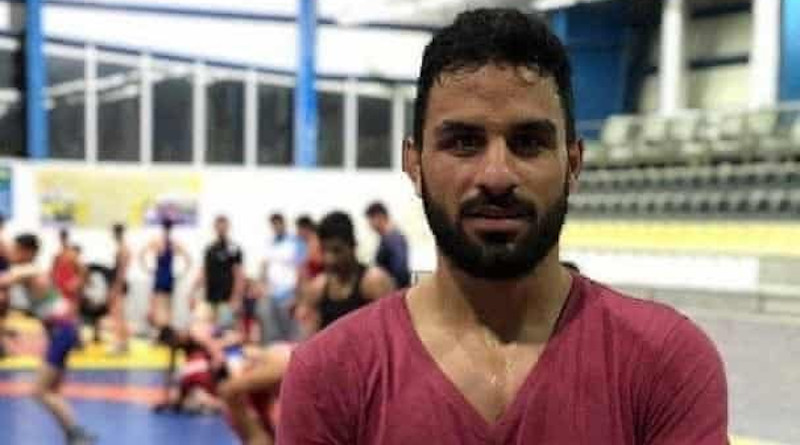Output Of Appeasement Policy Is The Bleeding Cycle In Iran – OpEd
By Hamid Enayat
According to Amnesty International, international action is needed to break the cycle of bloodshed in Iran. Despite all the international protests over the execution of Navid Afkari, the Iranian regime executed him. On the one hand, to stay in power and control the desperate and outraged people, it needs executions. On the other hand, the Iranian regime continues these executions due to the appeasement policy of European countries and the United States.
However, if these countries had conditioned any interaction with the Iranian regime on the cessation of executions, then the Iranian regime would not be emboldened to use the death penalty and take hostages abroad for its blackmail to stay in power. Unfortunately, so far has been proven that the EU and U.S. policymaker prefer blood money to human rights.
As the third anniversary of the nationwide protests of December 2017 and January 2018 looms, Amnesty International renewed calls for the international community to pursue justice regarding the dozens of protesters, including children, killed by Iran’s security forces across the country. Their bereaved families deserve answers that have been denied.
Unfair and heavy sentences issued as part of a crackdown on protestors and dissidents are the Iranian regime’s weapon of choice to fend off any form of protest and uprisings. The regime also uses vicious torture to silence any voice of dissent.
The policy of “creating fear using heavy sentences” was turned into the Iranian Judiciary’s official suppression policy for the protests during 2020. The current head of the Iranian Judiciary, Ebrahim Raisi, is a former member of the Death Committees in the political prisoners’ massacre in summer 1988.
Human rights activists and organizations have published several reports regarding the torture received by protestors in custody. Prisoners reported being harassed, beaten, tortured, flogged, receiving electric shocks, subjected to mock executions, waterboarding, forced injection of various chemicals, sexual violence, and medical care denial.
Former detainees and other eyewitnesses have reported shocking incidents of violence occurring during their detentions. Communication with family or legal counsel was blocked for those being held, and others were forced into solitary confinement for long periods. Televised shows included the interrogated and tortured, who appeared to confess to supposed crimes against the regime. Those arrested included children, teachers, women, young people, workers, athletes, students, and artists. No matter their walk of life, the regime targeted anyone who spoke out.
In September 2020, the Iranian regime was censured by Amnesty International for its widespread human rights violations as part of a wave of suppression after the nationwide uprising in November 2019. The censure outlined a long list demonstrating the cruel treatment received by the detainees and their families. It was also noted that the police, prison authorities, and intelligence services committed a “shocking” collection of human rights abuses, in which judges and prosecutors shared complicity.
Protesters Sentenced to Death
In the last week of October 2019, the Iranian regime’s authorities began to brandish death sentence threats as part of a crackdown on protestors. First published by the Kayhan Daily in November 2019 on the fourth day of the nationwide protests, this paper used as a mouthpiece of Ali Khamenei promised: “Execution by hanging rope.”
The promise of execution for protesting against the regime did not exclude anyone. Navid Afkari, a 27-year old champion athlete, was arrested in Shiraz in August 2018. As part of the pact between the Iranian intelligence services and the Iranian Judiciary, Afkari was sentenced to death, while two of his brothers were sentenced the lengthy prison terms.
On September 12, 2020, Afkari was executed at Adelabad Prison of Shiraz. Another protester, Mostafa Salehi, was executed in August 2020. His crime was participating in protests from December 2017 and January 2018. While rights activists worldwide wished that these were unusual occurrences, the truth is that the regime has continued to hand down even more death sentences for those arrested during the protests that occurred in various Iranian cities during December 2017, January 2018, August 2018, and November 2019.
In Tehran, the Iranian Supreme Court is reviewing a case where three protestors were sentenced to death. In Isfahan, death sentences were handed down for five protestors who participated in the December 2017 and January 2018 protests. Many of these death sentences issued by the courts are based on vague charges. Without access to lawyers and the use of torture, these detainees make false confessions against their will.
Despite protests and calls for change from the international community, the Iranian regime’s lack of consequences has emboldened their leadership to use these and other oppressive tactics to keep the Iranian people from protesting and demanding change. Without a concerted and consistent effort by the international community, the Iranian regime will continue to execute its citizens for exercising their rights of free speech and protest.

